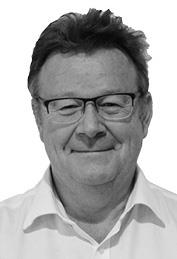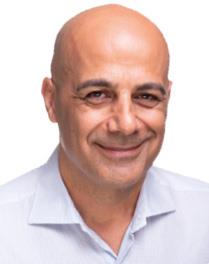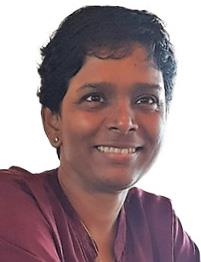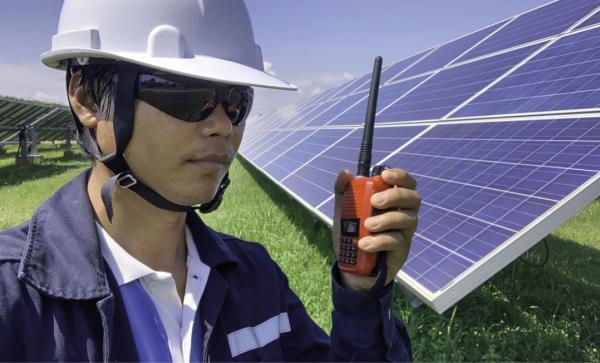14 July 2022

Energy, climate change and the environment continue to make headlines and the telecom sector is one of the biggest offenders when it comes to pollution. Robert Shepherd finds out what southern
The environment is always – pardon the pun – a hot topic. From climate change and the filth that we continue to pump into the air, to tenacious campaigners gluing themselves to trains, there’s always something to furrow the global brow.
Now that COP26 is behind us, countries around the world start to make promises about how they are going to meet various net zero deadlines. You know COP? It’s that event to which world leaders and other people in authority burn fuel by the gallons on private jets to tell the rest of us how the problem is going to be addressed.
While the aviation industry quite rightly takes one for the team when it comes to the biggest recidivists in the world, the telecommunications sector certainly has a lot to answer to in this space.
Mobile operators and the GSMA are taking collaborative action to be fully transparent about the industry’s carbon emissions and have developed an industry-wide climate action roadmap to achieve net-zero greenhouse gas (GHG) emissions by 2050, in line with the Paris Agreement. The GSMA says that globally, more than 50 mobile operators now disclose their climate impacts and GHG emissions via the internationally recognised CDP global disclosure system. The mobile sector has also been credited by the UN for achieving a critical breakthrough towards its mission of combatting climate change.
Of course, telecom tower infrastructure is a crucial asset for mobile operators, governments, independent infrastructure tower companies (towercos) and mobile users. Much of that, if not most, is to do with the mobile footprint being central to covering its customer base and the management and operation of towers essential to its cost and network quality performance.
According to Idem Est Advisory & Research, a boutique subject matter expert with 20+ years of experience specialising Asia-Pacific telecoms research, the Asia Pacific (APAC) region represents over 70% of the global telecom towers market (3.2m towers) and the high Capex requirements of 5G rollout is pushing MNOs to revisit that strategy and consider telecom tower asset monetisation to finance more tower builds to cater for the 5G mid-band and mmWave high frequencies rollouts.
In some instances, MNOs transferred their tower assets into a fully or partially-owned towerco such as Mitratel, Edotco and Digital Infrastructure Fund in Thailand.
However, to invoke the old adage “with great power comes responsibility”, so it’s time to ask what progress southern Asia is making with regards to using renewable energy.
Rami Reshef, chief executive officer, GenCell, explains that “in the eight states that make up southern Asia, most notably India and its neighbours”, the move to renewable energy has been somewhat uneven.
“The rise of India as an economic powerhouse has generally come at the cost of ballooning fossil fuel emissions and often governments in this area have been hesitant to provide the policy support that the growth of green energy requires,” he says. “Pakistan, for instance, has extremely modest targets, aiming for 5% of its power supply to come from renewables by 2030.”
That said, Reshef says recent moves by the Indian government in 2021 have initiated restrictions on the use of fossil fuels in large cities and have provided much more resources and support for green power. This has already led to considerable growth within the hydrogen and solar power sectors.
“With any hope, these latest developments will promote the greater use of green power across sectors, including in telecoms where ‘greening’ mobile towers continues to represent a significant opportunity for companies seeking to accelerate towards their sustainability ambitions,” Reshef adds.
As mobile network operators (MNOs) expand into more rural and remote areas across southern Asia, they need to build new towers. However, these new structures cannot access the electricity grid for reliable power.

Alistair Munro, Ryse
“The combination of wind and solar in combination with energy storage harvests the maximum amount of renewable energy”
Access to reliable power remains a challenge for telecom operators in many emerging markets. Poor to often non-existent grid infrastructure at many tower locations have driven a high dependence on diesel fuel to power such sites, increasing energy costs and carbon footprint for telecom operators.
A report carried out by the International Finance Corporation (IFC) called Investing in Sustainable Access to Communications: The Role of Telecom Energy Services Companies - conducted in partnership with a team of consultants from Roland Berger - says there are three countries in the region with a higher proportion of bad-grid and off-grid areas.
“In Myanmar, power availability is a major challenge,” the report says. “In the Philippines and Indonesia, the expansion of telecom towers into remote and rural areas will drive the number of bad and off-grid sites.”
According to the findings, southeast Asia accounts for around 29% percent of bad-and-off-grid telecom sites worldwide. However, the
report states that the same region is among the leaders globally in adopting renewable solutions at telecom sites. Some 23,000 telecom sites in the region have adopted renewables, out of 64,000 globally.
However, with innovation on the rise, the IFC revealed that Telecom Energy Services Companies (TESCOs) are emerging. Moreover, they own and optimise the power solutions for the telecom tower owner, through a long-term contractual agreement.
So, instead of the telecom tower owner having to invest and operate the power assets, TESCOs not only have the expertise, but also incentives to bring the best power solution and minimise the total cost of ownership of the power assets.
The good news is renewable energy comes in many forms. We can use solar energy from the sun, geothermal energy from heat inside the earth, wind energy, biomass from plants and hydropower from flowing water. So, with such l’embarras de richesses at humankind’s disposal – which one should we choose first? In other words, is one better than all the rest?
“Telecom operators and tower companies are capturing the opportunity of solar power, especially in countries in southeast Asia, where connecting to the grid is difficult,” says Dieter Billen, southeast Asia principal, Roland Berger, in the report. They are increasingly relying on TESCOs to do that for them.”

Rami Reshef, GenCell
“The rise of India as an economic powerhouse has generally come at the cost of ballooning fossil fuel emissions and often governments in this area have been hesitant to provide the policy support that the growth of green energy requires”
Reshef says every form of renewable energy has pros and cons and all are needed to achieve our ambitious global targets. “The ‘best’ power solution varies greatly depending on factors such as location, weather patterns, availability of resources etc,” he adds. “Hybrid projects can integrate the benefits of different types of renewable energy together such as intermittent solar or wind resources reinforced by reliable long duration fuel cells powered by hydrogen.”
Reshef adds that green technology is constantly evolving to make all forms of renewable energy cheaper, easier to deploy and more widely available – and “with any luck”, these factors will help renewable energy sources to achieve progressively faster growth over time as they become a more obvious choice over fossil fuel alternatives.
As far as Munro is concerned, the different types of renewable energy are complementary and one is not better than the other. “The combination of wind and solar in combination with energy storage harvests the maximum amount of renewable energy,” he adds. “Solar as a stand along technology only generates for a maximum of 8 hours per day therefore capital expense, energy storage capacity and land space needs to be significantly increased if this is the only source of renewable energy. The additional of wind into the energy generation mix maximises the generation from the available natural resources and optimises energy storage capacity. In this way the combination of wind and solar gives the best performance considering all the parameters in telecom and critical infrastructure applications.”
Reshef adds that reliable, resilient and efficient hydrogen power driving fuel cells is a key part of a sustainable future and that hydrogen has some key advantages over other forms of renewable energy. “It’s the most abundant element in the universe and thus presents an almost unlimited amount of fuel on which to draw,” he says. “It has an energy efficiency comparable to that of fossil fuels and its availability is not dependent on local meteorological and geographical conditions. It also produces no emissions at the point of use, making it an incredible green power source. Its primary challenges are around the cost and complexity of production, transportation and storage.”
Historically, hydrogen has been extracted by a process of “steam reformation” where large quantities of water are boiled and pure hydrogen is extracted from the resulting steam. Often this is accomplished by burning fossil fuels, most commonly natural gas, meaning that while hydrogen is emissions free at the point of use, it can result in emissions within its supply chain. Further, pure liquid hydrogen has an incredibly low boiling point of -252.8C meaning it has to be stored and transported at extremely cold temperatures at great cost and energy use.

Dieter Billen, Roland Berger
“Telecom operators and tower companies are capturing the opportunity of solar power, especially in countries in Southeast Asia, where connecting to the grid is difficult. They are increasingly relying on TESCOs to do that for them”
That said, technology being developed at GenCell and across the world aims to solve these problems. Instead of transporting hydrogen in its pure form, GenCell transports hydrogen in the form of ammonia, which can be stored at room temperature at a fraction of the cost.
“While no power source is perfect and different sources will be more appropriate for different circumstances, hydrogen plays a critical role in decarbonising difficult-to-decarbonise sectors for various industries and use cases,” adds Reshef.
Alistair Munro, founder of Ryse Energy, says “southern Asia offers lots of different challenges because many communities live in island environment”. However, he says some operators are noticeably investing in a greener future. Telenor has a significant installed base of renewables within its portfolio,” he adds.
It doesn’t take a genius to work out that when it comes to incorporating renewable energy, some climates benefit more from one than the others. “But the hybridisation of the technologies creates a more balanced and optimised solution,” says Munro. “This usually means the incorporation of small wind, as telco players who are exploring renewable energy will most likely be looking at solar PV and batteries.”
One company that’s clearly playing its part is Nokia. Recently, the Finnish gearmaker added liquid cooling technology to its latest AirScale Base Station portfolio. Given that around 80% of energy used by mobile radio networks becomes waste heat, the this piece of kit technology can transfer 4,000 times more heat to deliver up to 90% reduction in energy consumption for cooling and reduce base station CO2 emissions by 80%, Nokia says. Liquid cooling technology can also be used in cell towers where it can reduce up to 90 per cent of energy consumption for cooling. The company has also launched the Nokia AVA Energy Efficiency service, applying artificial intelligence (AI) to reduce energy usage in 5G and multi-vendor legacy networks by up to 30%.

Preetha Nadarajah, Nokia
“Southern Asia and the greater APAC region can benefit from the significant potential to reduce CO2 emissions that come with digitalisation”
Looking to the future, Preetha Nadarajah, chief technology officer of Malaysia, Nokia, says technology has a key role in the fight against climate change and the Finnish tech firm remains committed to sustainability and promoting green energy usage.
“Southern Asia and the greater APAC region can benefit from the significant potential to reduce CO2 emissions that come with digitalisation,” she says. “Recognising this potential, Nokia works with local partners and enterprises to digitalise. After all, there is no green without digital.5G is a natively greener technology with more data bits per kilowatt of energy than any previous wireless technology generation.”
While 5G networks are up to 90% more energy efficient per traffic unit than legacy 4G networks, Nadarajah says the former still require further action to enhance energy efficiency and minimise CO2 emissions that will come with exponentially increased data traffic.

“There are several energy-saving features at the radio base station and network levels, such as 5G-power-saving features, small cell deployments and new 5G architecture and protocols, which can be combined to improve the energy efficiency of wireless networks significantly,” she adds.
The will is there and we have the requisite renewable energy at our finger tips, so how much is the reluctance to move to green/renewable energy a political versus a business decision?
For Munro, any decision to move to green/renewable energy has to be a business- driven decision. “These are businesses so there has to be a positive effect to the bottom line and the environmental and sustainability benefits are secondary,” he says. “There is a limited regulatory framework in these markets unlike in Europe and other countries so there is limited “political” involvement in the decision making process from our view.”
He adds that “in today’s societal and conscious consumer environment”, coupled with the international public pledges many MNOs and towercos have made to go 100% renewable, “this energy must be green”. He continues: “Adding to this pressure, energy prices for both grid-connected and off-grid using diesel are soaring. All creating a follow-on effect that the major players are now realising renewables is the only viable option for the future of telecoms. Renewables are not only the ‘green’ or ‘CSR’ or ‘environmentally-friendly’ solution. On-site renewable energy generation is cheaper than traditional grid and off-grid solutions in most countries across the world. Choosing hybrid renewables as your primary energy source is the financial and economic decision, not just a green one.”
While the decision to ‘go green‘ can be a difficult one for governments and businesses to make, Reshef says “the crucial fact to remember”, is that moving to renewable energy is in the interest of everyone, most obviously because we know it is necessary for our continued survival on this planet. “We also know that a continued dependence on fossil fuels is an unsustainable strategy that is leading us to irreparable climate disaster if we don’t drastically reduce emissions as soon as possible,” he adds. “If businesses do not transition in the short term, the long-term consequences will be catastrophic.”
Nevertheless, “the truth of the matter”, according to Reshef, is that we do not have to decide between economic growth and a sustainable future. He says “in actuality”, the science shows us that one cannot be achieved without the other.
“Our continued dependence on fossil fuels is a massive risk that threatens both the world we live on and the growth of our economy,” Reshef concluded. “New investment in renewable energy has the potential to supercharge our economy in the future, ensuring reliable, safe and plentiful energy for all. GenCell is proud to be making a contribution to this clean energy future.”
Nadarajah adds: “Some of the most interesting new opportunities for digital exist in industry – particularly physical sectors. We are working with a wide variety of clients in smart manufacturing, factories of the future, ports, energy, public sector, and we are confident that collectively we can make a difference.”
The optics are good. Thankfully there’s no lack of sunlight across southern Asia and the cost of solar power is declining rapidly. Add to that the fact MNOs are increasingly embracing sustainability, filthy diesel generators are being replaced by solar panels as a primary source of power for telecom towers.






